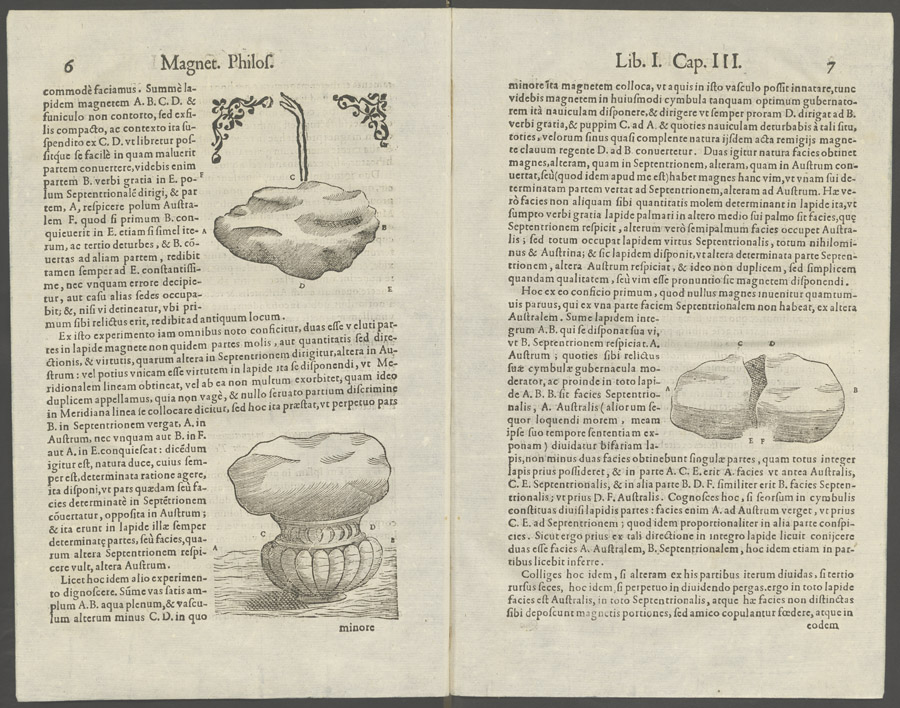Nicolaus Cabeus: Analogue to a tree a magnetic stone has small channels.
Nicolaus Cabeus (1585-1650), Philosophia magnetica (Coloniae, 1629), Zentralbibliothek Zürich, Alte Drucke und Rara, TZ 117: 1, p. 9.
Nicolaus Cabeus (1585-1650), Philosophia magnetica (Coloniae, 1629), Zentralbibliothek Zürich, Alte Drucke und Rara, TZ 117: 1, p. 11.
These channels follow the length of the stone. Magnetic force (like water) passes through this channels.
Nicolaus Cabeus (1585-1650), Philosophia magnetica (Coloniae, 1629), Zentralbibliothek Zürich, Alte Drucke und Rara, TZ 117: 1, p. 6-7.
After a split, these channels continue to function.
Nicolaus Cabeus (1585-1650), Philosophia magnetica (Coloniae, 1629), Zentralbibliothek Zürich, Alte Drucke und Rara, TZ 117: 1, p. 110.
Does the position of the stone change the movement of the vessel in which the stone is placed?
Nicolaus Cabeus (1585-1650), Philosophia magnetica (Coloniae, 1629), Zentralbibliothek Zürich, Alte Drucke und Rara, TZ 117: 1, p. 111-112.
Cabaeus’ instruments are similar to Gilbert’s. But Cabaeus follows (in his emphasis on channels) another line of investigation. It leads him towards an understanding of magnetic forces as flux through channels.
Nicolaus Cabeus (1585-1650), Philosophia magnetica (Coloniae, 1629), Zentralbibliothek Zürich, Alte Drucke und Rara, TZ 117: 1, p. 49.
Nicolaus Cabeus (1585-1650), Philosophia magnetica (Coloniae, 1629), Zentralbibliothek Zürich, Alte Drucke und Rara, TZ 117: 1, p. 79.







